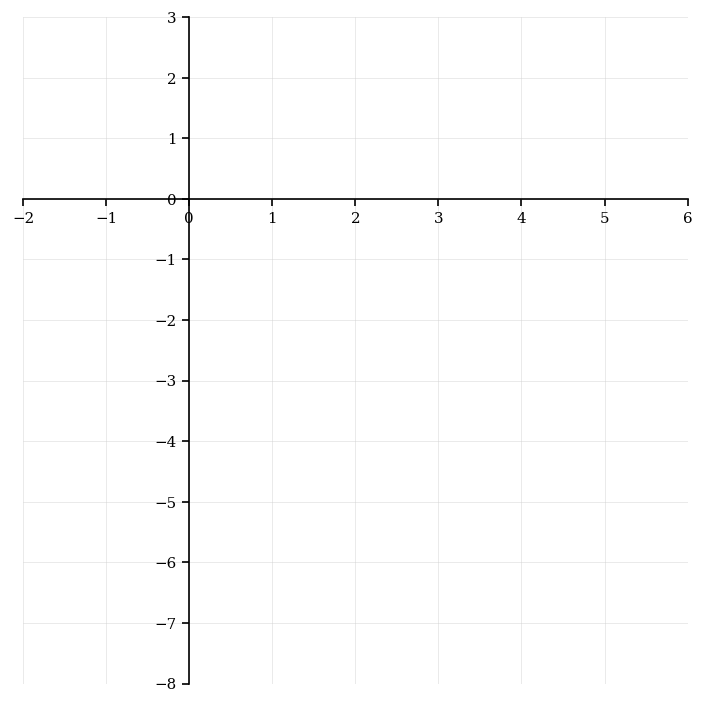Practice SL 2.6—Quadratic function with authentic IB Mathematics Analysis and Approaches (AA) exam questions for both SL and HL students. This question bank mirrors Paper 1, 2, 3 structure, covering key topics like functions and equations, calculus, complex numbers, sequences and series, and probability and statistics. Get instant solutions, detailed explanations, and build exam confidence with questions in the style of IB examiners.
Let , where and . The line intersects the graph of at exactly one point.
The function can be expressed in the form , where . The function can also be expressed in the form , where .
Show that .
Find the value of and the value of .
Find the value of and the value of .
The quadratic function has a vertex at and passes through the point .
Write down the equation of the axis of symmetry.
Find the value of .
Sketch the graph of , clearly labeling the vertex, the -intercept, and the axis of symmetry.
Consider the quadratic function .
The function is transformed to the function . Describe the transformations applied to to obtain .
Find the vertex of the function and explain why it is a maximum.
Find the area between the curve and within the interval .
Let and , where .
Find the discriminant of and hence solve the equation .
Find the discriminant of and hence solve the equation .
Find the vertex of each function.
On the axes below, sketch the graphs of and , clearly indicating the vertices and intercepts with the axes.

Figure 1: Graph for sketching and
Consider the quadratic function , for .
Find the -coordinates of the -intercepts of the graph of .
Find the coordinates of the vertex of the graph of . Show your working clearly.
The function can be expressed in the form . Determine the values of and by completing the square.
It is hypothesized that a line is tangent to the graph of at one point. Find the possible values of to show if it is true or not.
A quadratic model is fitted to three measured points , , .
Determine (numerically). Give your values correct to 3 significant figures.
Write in vertex form . Hence state the vertex and the range of . Give to 3 d.p.
Let . Solve for to 3 d.p., and justify the number of solutions.
Solve for .
The graph of a quadratic function has -intercepts at and . The vertex of the graph lies on the line .
Find an expression for .
Determine the range of .
The domain of is restricted to . Find an expression for .
Describe a sequence of transformations that maps the graph of to the graph of .
A quadratic model is fitted to three measured points , , .
Determine (numerically). Give your values correct to 3 significant figures.
Write in vertex form . Hence state the vertex and the range of . Give to 3 decimal places.
Let . Solve for to 3 decimal places, and justify the number of solutions.
Solve for .
The quadratic function has -intercepts and , and its vertex lies on the line .
Find .
Determine the range of .
Find given the domain .
Describe the transformations to get from .
A quadratic model is fitted to three measured points , , .
Determine (numerically). Give your values correct to 3 significant figures.
Write in vertex form . Hence state the vertex and the range of . Give to 3 d.p.
Let . Solve for to 3 d.p., and justify the number of solutions.
Solve for .